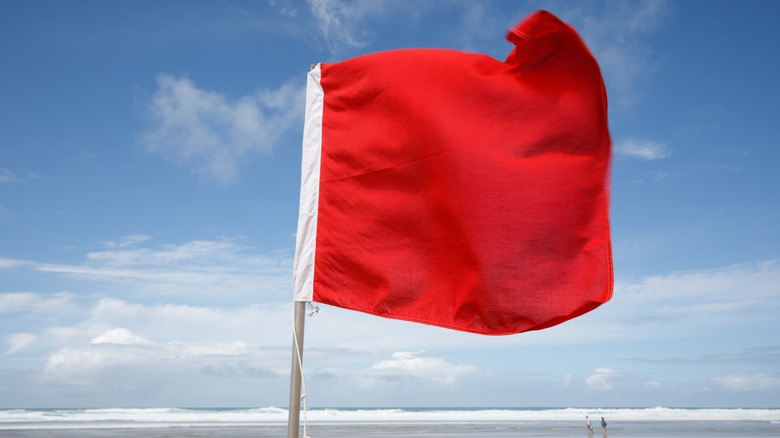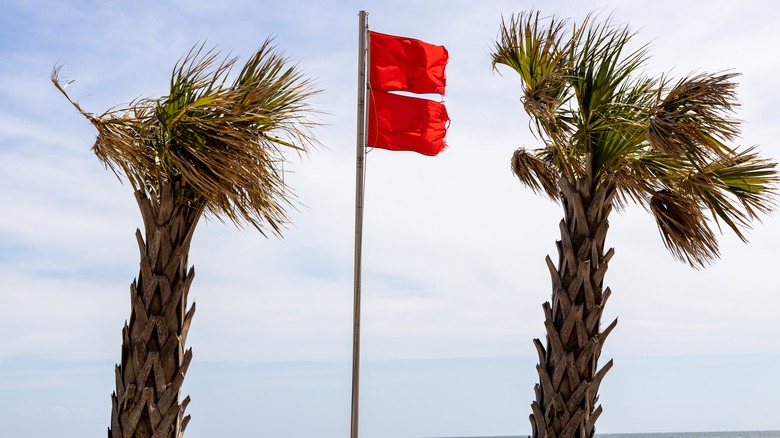What It Really Means When You See A Red Flag At The Beach
Just like how you'd (wisely) bolt at the first sign of a red flag from a potential romantic partner, you should also exercise caution when encountering red flags scattered along the beachfront. If your beach days are few and far between and you're clueless about the whole flag system, it's important to know that many beaches use this method to communicate the safety conditions of the waters to the public. The system, established by the United States Lifesaving Association and the International Lifesaving Federation, uses flags of various colors, such as yellow, to convey specific meanings. Spot a red flag? Consider it a sign to reschedule your beach day.
Red flags represent a serious warning, a signal that the water conditions are unsafe for swimming. "I think we all understand that red means danger. That's telling you that things are bad out there," Dr. Stephen Leatherman, professor and director of the Laboratory for Coastal Research at Florida International University, told Accuweather. The bold color warns beachgoers of high-hazard situations, including high surf, dangerous currents, or both, which can be challenging even for experienced swimmers.
Catching sight of a red flag doesn't mean that you should avoid the water entirely, but it does call for a heightened level of caution. It's a different story if you see a double red flag, however — in that case, the water is totally off-limits. Ignoring such a warning puts your safety at risk and could lead to potential legal consequences.
Beware of double red flags
You can probably get away with dipping your toes into the water when red flags are up, but when you're faced with two, don't even think about coming into contact with the waves. Elyssa Finkelstein, a Florida Department of Environmental Protection spokesperson, told Accuweather that double red flags are a non-negotiable sign that water conditions are downright hazardous. "Often, this means very dangerous ocean conditions, such as strong rip currents, and beachgoers should stay out of the water when these flags are present," she said.
Some places like Franklin County in Florida even impose consequences for defiers. Individuals found swimming under a double red flag will be asked to retreat to the beach, and failure to comply may result in a $500 fine or a 60-day jail sentence. Sheriff A.J. Smith shared with WCTV that such policies are necessary because rulebreakers endanger themselves and the people who might have to undertake rescue operations.
And for those who look out at the sea and observe what appears to be a serene situation despite the red flags, think again. "Generally, people want to swim where it looks like it's calmer because the waves aren't breaking. But that's the danger zone where that rip current actually is," Mia Hulgin, head lifeguard for Carolina Beach Ocean Rescue, explained to WECT. "So, you want to stay where those waves are breaking more consistently, in that rougher type of water than in that calm area where that rip is."

